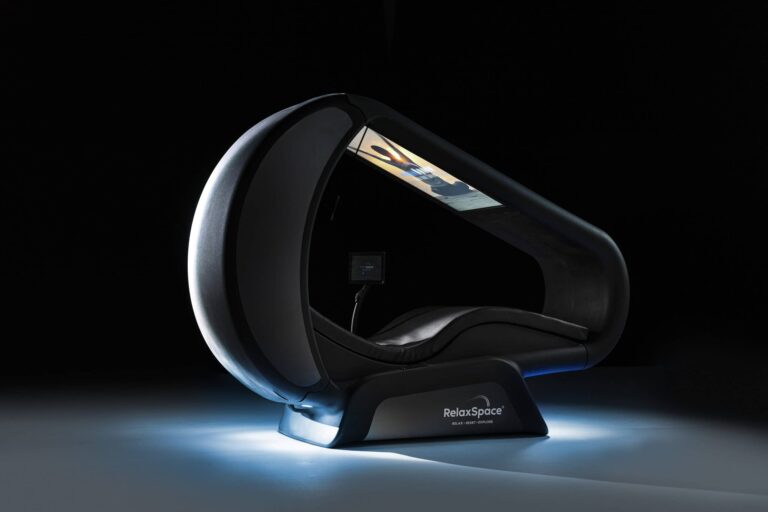Recover Smarter: Tools for Long-Term Movement Health
Recovery isn’t a luxury—it’s a necessity. Whether you’re an athlete, a weekend hiker, or someone just trying to move through life without nagging pain, recovery habits are what keep you in motion over the long haul. Yet too often, recovery is treated as an afterthought—something you squeeze in after pushing your body to its limit.
But what if recovery became part of the plan, not the reaction? The smartest movers today—trainers, physical therapists, and performance-focused individuals—are investing in recovery just like they invest in training. And the science backs them up.
According to the CDC, over 50 million U.S. adults report chronic pain, much of it tied to overuse, poor movement habits, or injuries that never properly healed. Ignoring recovery doesn’t just increase discomfort—it limits mobility, leads to long-term injury risk, and slows down your ability to perform at your best.
If you want to keep moving well—not just now, but decades from now—here are the recovery tools and habits that will keep your body feeling strong, mobile, and pain-free.
Start With Expert Guidance
Before investing in gadgets or building out your recovery routine, it helps to get an expert’s perspective. A licensed chiropractor can assess your movement patterns, joint health, and muscular imbalances to uncover the root cause of recurring tension or pain. Chiropractic care isn’t just about back cracks—it’s a holistic approach to spinal alignment, posture, and nerve function.
Many people find that regular adjustments combined with soft tissue work, stretching, and lifestyle tweaks can dramatically reduce pain and stiffness over time.
Seeing a chiropractor can help with:
- Postural issues from desk jobs or prolonged sitting
- Chronic headaches or neck tightness
- Lower back pain from lifting or impact sports
- Nerve pain stemming from misalignment
- Improving joint range of motion
Chiropractic support isn’t about quick fixes—it’s about resetting your foundation so every movement feels smoother and stronger.
Tools That Support Active Recovery
Active recovery is different from complete rest—it’s about movement that promotes healing without stressing the body. Certain tools can make these sessions more effective, especially when used consistently.
Must-have recovery tools:
- Foam roller: Great for breaking up fascia and improving circulation
- Massage gun: Offers deep tissue percussion therapy to reduce soreness. For added support, some people pair this with topical pain relief products to ease muscle tension—understanding how Tiger Balm vs Aspercreme compare can help you choose what fits best in your recovery routine.
- Compression boots: Boost lymphatic drainage and ease heavy legs after intense activity
- Resistance bands: Helpful for mobility drills and joint activation
- Lacrosse ball or massage ball: Ideal for pinpointing tight spots (like glutes or traps)
The key with these tools is regular use. Five minutes a day of targeted mobility work can prevent the kind of stiffness that turns into injury later.
Don’t Sleep on Sleep
It’s easy to overlook, but sleep is the single most powerful recovery tool available. This is when your body repairs tissue, restores energy, and resets your central nervous system. If your recovery plan doesn’t prioritize rest, you’re working against yourself.
Sleep tips that support recovery:
- Stick to a consistent bedtime, even on weekends
- Keep your room cool, dark, and screen-free
- Wind down with stretching or breathwork before bed
- Avoid caffeine after 2 p.m. to protect deep sleep
- Track your sleep (with an app or wearable) to catch patterns
If you’re doing everything right in the gym but skimping on sleep, you’re shortchanging your results—and your long-term health.
Fuel Recovery From the Inside Out
Nutrition plays a crucial role in how well your body recovers from movement, especially if you’re training regularly. Proper fueling reduces inflammation, rebuilds muscle, and supports joint health.
Foods that promote recovery:
- Salmon and sardines for omega-3s
- Berries and leafy greens for antioxidants
- Sweet potatoes and quinoa for glycogen replenishment
- Eggs and Greek yogurt for muscle repair
- Turmeric and ginger for anti-inflammatory support
Hydration also matters—your joints and muscles need water to function efficiently. Make sure you’re drinking enough, especially on active days.
Stretching and Mobility Work: Not Just for Yogis
You don’t need a yoga mat or a full flow class to benefit from mobility work. Just a few minutes of targeted stretching and activation can prevent stiffness, support joint integrity, and help you maintain proper movement mechanics.
Stretching strategies that work:
- Dynamic warmups before movement (leg swings, hip circles)
- Static stretching post-exercise to cool down muscles
- PNF (Proprioceptive Neuromuscular Facilitation) for deeper range of motion gains
- Joint rotations (ankle, wrist, hip, shoulder) to maintain full ROM
Mobility work doesn’t need to be long or complicated—just consistent.
Mental Recovery Matters Too
Your nervous system plays a major role in how your body handles pain and stress. Chronic stress can increase muscle tension, reduce sleep quality, and make recovery harder. That’s why mental recovery practices are just as important as physical ones.
Mental recovery tools:
- Meditation or guided breathwork to lower cortisol
- Digital detoxes after training or before bed
- Time in nature to reset your sensory input
- Journaling or gratitude practices to reduce mental clutter
Recovery is a full-body process—and that includes your mind.
Final Thoughts
Smart recovery isn’t about doing less. It’s about doing the right things to help your body bounce back stronger, reduce pain, and move better over time. Whether that’s booking a session with a skilled chiropractor, dialing in your sleep routine, or using a foam roller after your workouts, every small action adds up.
Movement is freedom—but only if your body is equipped to handle it. So invest in the tools and habits that protect it, rebuild it, and make sure you’re not just active today, but for the long run. Recover smarter, and keep moving forward.


